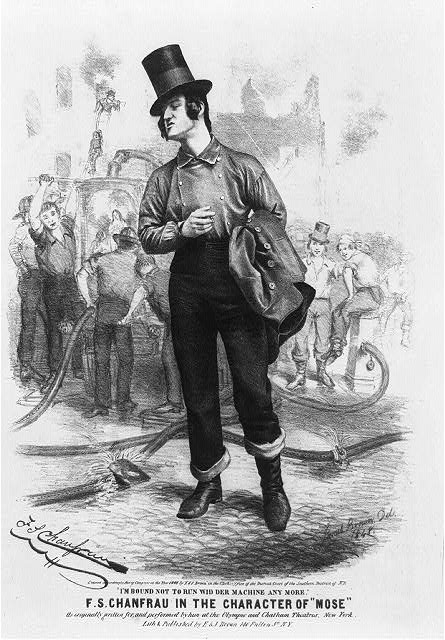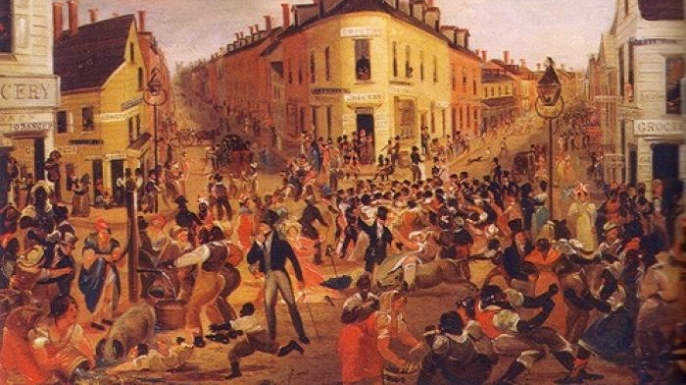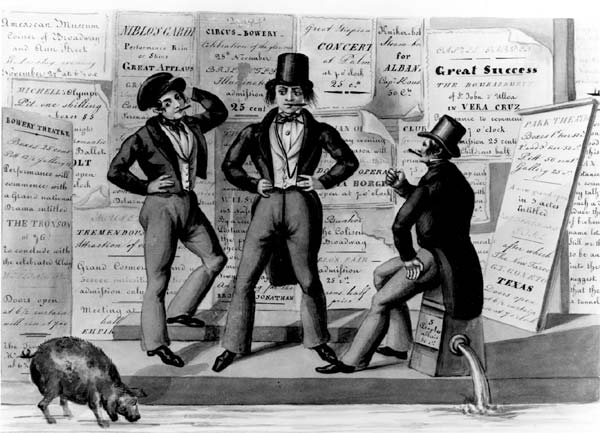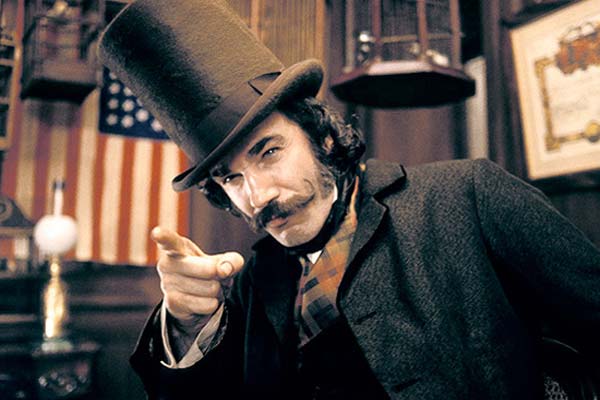Heavy boots thud loudly on rickety stones of Orange Street, muffled only by the layers of mud and filth that cover the poor excuse for a road. Their owner ignores the calls of whores leaning from the windows flaunting their wares and instead slips into the Diving Bell Saloon. With an average of twelve taverns per block, one is never far from a place to find a drink (1). As the figure enters the dark, depressing saloon he takes off his black silk hat and slides his hands down his greasy hair. It was worn long in the front and short in the back with copious amounts of oils in the fashion of all who were nicknamed “soaplocks.” He orders a stiff whiskey with a sure voice and a heart beating rapidly from the excitement of wondering where the night will take him. Perhaps he will go place a bet on a bare-knuckle boxing match or get into a scrum himself. Or perhaps he will end up in the warm embrace of a “celebrated nymph” he could procure from Mrs. Shannon’s House at No. 74 West Broadway (2). Wherever his path took him that night, one thing was sure–the year was 1842 and he was on the edge of a different kind of frontier. This wasn’t the wild west but New York City’s most notorious neighborhood, the Five Points.

The Five Points was a New York City neighborhood comprised of twenty-two blocks and one of the worst reputations in history. Over time, historians have changed their views on the neighborhood drastically. The bulk of scholarship on the Five Points has focused on interpreting the area as if it was a black hole in which no one may hope to escape alive. However, toward the end of the twenty-first century, revisionists began taking another look at the neighborhood and painting it in a much more positive light. In truth, however, it seems that the real neighborhood was somewhere in between. In the words of historian Tyler Anbinder,
These revisionists have vastly improved our understanding of Five Points…Yet in their well-intended efforts to identify prejudice, these writers have, I believe, lost sight of some unpleasant truths. Even if one considers only the statements of Five Pointers themselves, rather than the biased views of outsiders, one finds a neighborhood rife with vice, crime, and misery… Previous generations of writers may have exaggerated certain aspects of life in Five Points, but the truth is that conditions there were quite wretched. (3)
It’s not surprising that there has been such a skewed vision of Five Points over time. As masses of immigrants entered through New York, many of the poorest settled in the Five Points area and a collection of tenements, boarding houses, and destitution formed. It wasn’t long before the neighborhood garnered such a reputation that the wealthy and elite from across the world came to take a tour of the points. Escorted by police officers, “slumming” was a popular tourist option to walk among the poor and some of the most influential figures of the era like Abraham Lincoln, a Russian grand duke, and Charles Dickens were known visitors. As they patrolled the streets, tourists would likely see children milling through garbage, selling hot corn, or sweeping up filth as well as adults walking about in the seemingly omniscient drunkenness.

One of the most well known aspects about life in New York City in the 19th century was the preponderance of gangs. More specifically, as the Five Points became a hub of tourism, taverns, and entertainment, some of the most notorious gangs of the period were founded on its streets. Many of these were featured in Martin Scorsese’s film, Gangs of New York which was set in Five Points during the 1860s and showed groups like the Dead Rabbits, Plug Uglies, and others. It should be noted that the film got a lot right and a lot wrong with regards to the Five Points (specifically, the Dead Rabbits might not have even existed) but that is a discussion for another post. Instead, let’s discuss a little about the Bowery Boys, sporting culture, and their development into political machines.
For many, the desire to show one’s sporting bravado was intermingled with political activism. Politics, as Elliot Gorn states, “offered a cluster of deeply satisfying symbols and rituals, affirming aggressive masculinity through displays of ethnic chauvinism or blustering nationalism” (4). Sporting culture was one that was deeply tied with fraternal ideals, thus lending itself to development of gangs such as the Irish Roche Guard or nativist Bowery Boys and, by extension, political organizations. Secret societies such as the Order of the Star Spangled Banner soon became involved in politics and the Order, later renamed the American Party or the Know-Nothing Party, would go on to overtake the Whigs as a major entity. The Know-Nothings were able to attribute their success to the rampant anti-immigrant sentiment found in urban centers such as New York. The overwhelming desire to prove one’s masculinity often appeared as a powder keg of tension that would violently explode. As the Know-Nothings held a firm anti-immigrant and anti-Catholic platform, their advocates took up arms—as seen in an 1854 incident in which “a disgraceful fight was going on between the hearers of a street preacher and a band of men who are said to have been Irishmen” (5). The line between gangs and political party supporters was often blurred but was one that cut deep in the sporting culture.

In the ’50s and ’60s, it was not uncommon for men to be killed in fights between the supporters of particular candidates and each gang had a different alignment. Indeed, the gangs would use tactics of fear and intimidation that were similar to those used by the Democratic-supporting Ku Klux Klan during Reconstruction after the Civil War. The mid nineteenth century saw the rise of fraternal organizations, secret orders, and paramilitary forces. But according to Anbinder, many of the original young sports and rowdies of the ’30s and ’40s were less politically minded and more interested in the sporting culture itself than those who came later. Still, important trends can be seen stretching between the gangs of urban New York and the terrorist Klan of the rural South.
Life for a Bowery Boy was essentially a constant quest for the next great chance to prove one’s manliness. For some that meant going toe to toe in a bare-knuckle boxing match or prize fight. For others, it meant frequenting one of the estimated 200 brothels in the city (although it was likely much higher as most buildings had some sort of service on an upper floor, 6). This was a new type of urban man who engaged in gambling on everything from horse races to cock fighting, earning the name of a “Young Sport.” He eventually faced a moral decision based on whom he associated himself with. Did he join the rowdies and soaplocks by engaging in drunken behavior and acquaintances with loose women? Did he join a newly formed temperance society targeted at men his age? Or did he float somewhere in the middle? No matter his choice, this man cared about four things: style, career, honor, and excitement.
- Tyler Anbinder, Five Points (New York: Free Press, 2001) 191.
- “Lives of the Nymphs,” Sunday Flash, October 17, 1841, in Helen Lefkowitz Horowitz, Attitudes toward Sex in Antebellum America (Boston, MA: Bedford/St. Martin’s, 2006), 132.
- Anbinder, 4.
- Elliot J. Gorn, “’Good-Bye Boys, I Die a True American’: Homicide, and Working-Class Culture in Antebellum New York City,” The Journal of American History 74 (Sept., 1987): 408.
- “Street Preachers and Riots,” The Weekly Herald, New York, NY, 10 June 1854.
- Helen Lefkowitz Horowitz, ed. 126.
Note: Portions of this post have been taken from my essay, “The Age of Sporting, Soaplocks, and Separate Spheres,” The Ozark Historical Review 44, no. 1 (2015): 1-14.

Leave a Reply